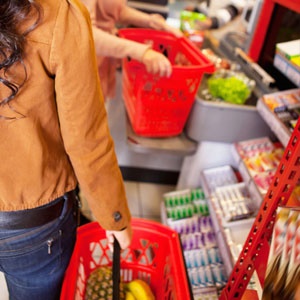
I am thrilled by the announcement that Woolworths intends to remove sweets and chocolates from their checkout sections.
Dieticians have been lobbying supermarkets and other retailers for many years to stop exposing consumers to the temptation of sweets, biscuits and chocolates during the obligatory wait at the tills. Anyone who has ever stood in a supermarket queue with young children will know the kind of pressure I’m talking about.
Read: Supermarket shopping with your toddler
Once put in motion, this move to remove temptation at the checkouts will be followed by most other local supermarkets. However, I’m not sure if the mega-pharmacies will follow this example.
They should, because there is nothing more disconcerting than seeing customers purchasing slimming products at one end of the shop and then loading up on designer chocolates in the checkout queue.
Well-researched advertising ploys
I can remember how outraged I felt as a student, when we did a project on advertising and it was revealed that exposing bored or immobile clients to tempting items was one of the most successful ploys in retail. The concept is simple and is based on triggering impulse buying.
Other examples included moving items around in the supermarket so that clients may “rediscover” their favourite foods or snacks over and over again, or playing loud, distracting music to make tired shoppers even more exhausted, because the more tired you are, the more confused you will become and end up buying a whole lot of items you don’t need.
Read: Lack of sleep may lead to impulse food buying
Subliminal ads
The list of advertising gimmicks was endless and, as idealistic students, we were particularly shocked when we discovered “subliminal stimuli”. These are advertising messages that are flashed on a movie or TV screen for a split second. The image appears and disappears so rapidly that people are not consciously aware of having seen it, but it is designed to embed itself in the subconscious and encourage actions – like buying – one would not otherwise engage in.
The controversy about the use of subliminal stimuli has raged for many years and such ads have been banned in countries like the UK. Some experts believe that seeing a message for less than 1 second cannot make a difference to our thoughts and actions, but more recent research at the University College London, funded by the Wellcome Trust, found that people are indeed able to process subliminal messages. Interestingly these researchers found that negative messages had the greatest effect on the subjects.
Read: When ads entice you to eat
I can imagine that in the light of the above-mentioned, institutions that wish to reform our eating and drinking habits may considering flashing “Avoid X or Y” on screens to make us avoid buying sweets, fatty snacks or alcohol.
No matter what positive effects such manipulation of the subconscious may have, I am personally opposed to the idea of not being able consciously to choose the images I’m exposed to, and this kind of advertising remains anathema in my book.
Hopefully countries like South Africa will never permit anyone to stoop to this level of manipulation to make a quick buck, influence buying impulses or win an election!
Those checkouts!
But what about those endless checkout queues? What will companies like Woolworths put on their checkout shelves?
Hopefully it will be something more exciting than gentlemen’s underwear! In my local branch my least favourite checkout at Woolworths has rows and rows of grey, navy and black socks on display – not something to cheer me up as I shift from foot to foot or do passive exercises to pass the time.
Read: Your supermarket may affect your weight
I am waiting in anticipation to see what the various companies will come up with. Toys to tempt bored kids? This idea is already being used very successfully by another large retailer: “Stikeez” plastic toys, which parents “earn” for every R150 they spend at Pick n Pay, have become all the rage.
Healthy alternatives?
So, how about “healthy” rewards, such as nuts and dried fruit? Perhaps, but in small portions because these healthy foods are also high in energy (mixed nuts 2530 kJ/100g; average dried fruit 1270 kJ/100g), and just as “moreish” as sweets and chocolates. My favourites, fresh vegetables and fruit, would alas not work because they need to be kept cool and have a limited shelf life.
Come to think of it, the problem could, in fact, be solving itself. Perhaps the displays at checkout aisles have already lost a lot of their impact because most people spend their time fiddling with mobile phones and Ipods and are oblivious to their surroundings.
Who will be captured by displays when even tiny tots can chat to friends with instant messaging systems on their smartphones or send jokes to pals on social media?
Read more:
Kids programmed to like sweets
Sweet cravings lead to overeating
References:
- Ajam, K (2015). No more sweets at Woolies checkouts.
- Alleyne R (2009). Subliminal advertising does work, claim scientists.
- Business Tech (2015). Woolworths takes sweets and chocolates off checkout shelves. Staff writer, August 28, 2015.
- Food24 (2015). Woolworths removes sweets and chocolates from checkout aisles.
- Wolmarans P et al (2010). Condensed Food Composition Tables for SA. Medical Research Council, Parow Valley, Cape Town.)




 Publications
Publications
 Partners
Partners














